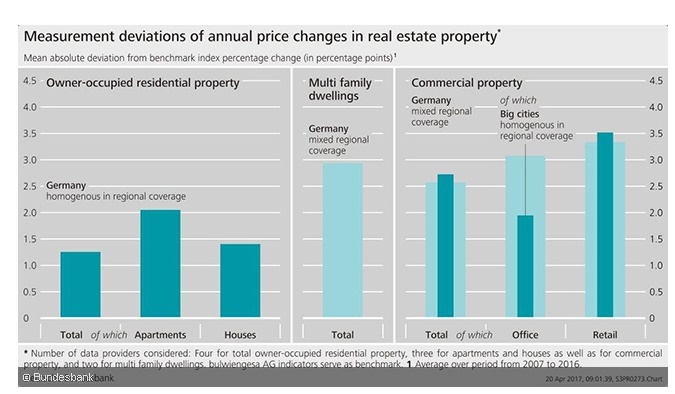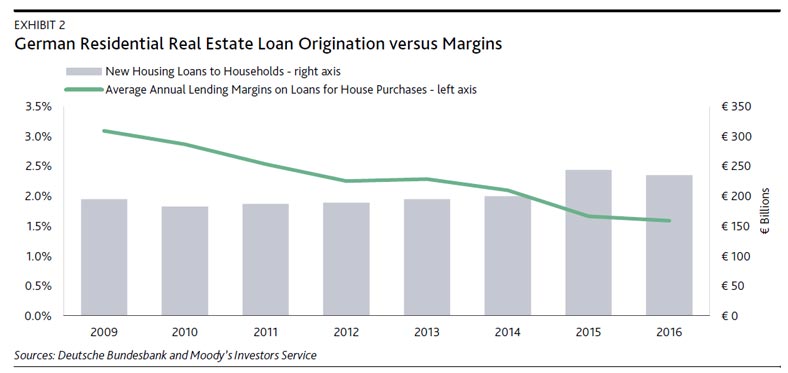We will be talking about nothing less than innovation in the financial industry – a subject which, by its very definition, cannot be boring. Innovation basically boils down to the introduction of something new. But is that all there is to it? Edward de Bono, thinking about progress in the world of transport, once described a key element of innovation with the following words. “Removing the faults in a stage-coach may produce a perfect stage-coach, but it is unlikely to produce the first motor car.”
Whenever we talk about innovation, it’s not, then, a question of perfecting habitual modes of thought and action but about harnessing inspiration and thinking laterally.
I would like to kick off today’s event by posing three questions that have greatly occupied me recently in my capacity as a banking supervisor.
- Why have innovations in the financial industry become a hot topic now, of all times?
- What do we mean, exactly, when we talk about innovation in banking business?
- Can banks even be innovative?
2 Innovation: why now, of all times?
Let’s start with the first question: innovations in the financial industry – why now, of all times? I would like to begin by saying that this question is not an inappropriate one. After all, you could say that, given the lessons learned from the financial crisis, it should not be in our interest to urge banks to churn out one innovation after another. Someone who is often quoted in this regard is Paul Volcker, who once said that the industry’s “single most important” contribution in the last 25 years has been automatic telling machines.
Let me be quite clear on this point. Innovations which are no more than smoke and mirrors are not what I came to speak about today. I am here to talk about innovations which offer new solutions, because they are exactly what the banking sector needs for a host of questions it is facing.
At first glance, Germany’s banking sector would appear to be faring quite well: the country’s banks and savings banks have managed to keep their earnings steady recently, and they have rigorously built up their capital buffers. Yet the outlook for profitability is gloomy, and there are a multitude of reasons for this. There are two particular factors I would like to single out because they shine a harsh light on what needs to be done.
The first concerns interest business: it is no secret that the low-interest-rate environment is squeezing margins and deteriorating the outlook for earnings. But saying that, rising interest rates are not a panacea either. Contrary to what is often assumed, they do not bring relief initially, but exacerbate interest rate risk, and that is particularly the case in Germany. Institutions will need to provide for this.
The second reason why profitability is weak is, of course – and I won’t shy away from it – regulation. Regulatory standards were made far tighter in response to the financial crisis, setting the bar higher for banks. That was the right move, and it was an important move – I think you will agree that a stable financial system is in everyone’s interest. But it is also right to say that tighter regulation is taking its toll on many banks. These shifts in the framework conditions are making themselves felt on banks, of course.
Time and again, institutions have raised these two points in an effort to pin the blame for their woes on monetary policy and regulation. But this “we’d be better off without you” mindset is of no help to anyone. Albert Einstein once even said that “insanity is doing the same thing over and over again and expecting different results”. Because there’s no getting around the fact that the rules of the game of banking have changed. There is little to be gained from coming over all helpless – it is up to everyone to adapt to the new environment. Actionable areas include different pricing models, cost reductions or also consolidation.
But innovation is an actionable area, too. And given the huge splash made by digitalisation in recent years, it is a field that has garnered a great deal of attention. If nothing else, the wave of digitalisation has unleashed a strong sense of optimism about the future – fintechs bursting with fresh ideas and business models, customers keen to adopt digital banking, and, not least, the necessary technical capabilities such as broadband internet, especially, have certainly seen to that. The centuries-old banking business has seen the emergence of a kind of virgin territory – a place where, all of a sudden, lateral thinking counts again and where perfecting mathematical models isn’t necessarily one of the best strategies for earning money any more. Innovation, then, is booming in banking business at the moment, and there are two reasons for that: first, the gloomy prospects for many traditional business fields; and second, the challenges and opportunities presented by digitalisation.
3 What does innovation (not) mean?
What exactly does innovation mean in the age of the digital bank? The digitalisation of the financial sector would not have become such a hyped-up topic, were it not for the existence of three visionary, but at the same time, ominous scenarios: I am talking about disruption, revolution and the infinite freedom of digital banking.
Let me talk you through these scenarios one by one.
The first scenario was, and still is, disruption. Disruption means the fear that fintechs, and especially tech giants as well, might offer far more innovative financial services far more cheaply, which would very quickly transform them into overpowering rivals for traditional institutions.
That is not entirely a far-fetched scenario – just take exchange trading, for example, much of which left the trading floor quite some time ago. What you will instead find in Frankfurt and at other exchanges are vast spaces filled with high-performance computers. This example shows us that when it comes to high frequency trading, machines are making ever greater inroads into the services sector. Decisions which were once the preserve of floor traders are now being made by algorithms. The chief difference is that algorithms make up their minds in milliseconds – that is, around the clock – and they can communicate worldwide. Their main cost factor is the electric bill.
But so far, disruption has only affected individual components of the banking business. As yet, not a single technological innovation has managed to fully replicate the economic functions of a bank or savings bank. And even if there have already been instances, such as online payments, where the well-established institutions fell far behind the pace of developments within a relatively short space of time, it is often the case that innovations are beset by what is known as the “curse of the first mover”. That is, the first player to come up with a bright idea frequently founders because that idea is not market-ready. Silicon Valley’s tech giants, on the other hand, often buy up ideas, but they make them a success. So time to market is not everything.
I don’t see widespread disruption happening today or in the foreseeable future. Right now, day-to-day relations between fintechs and banks in Germany can best be described by the relationship status “It’s complicated.” We are currently seeing almost every model conceivable in the business world, from a traditional fintech takeover and white label banking to the idea of the bank as a digital ecosystem. While fintechs started off being quite feisty towards the established institutions, we are now seeing a diverse coexistence based on competition, cooperation and expanding the service offering.
The second scenario is the one I dubbed “revolution”. That is another scenario which has not materialised so far. Digitalisation, it seemed, held out the prospect of creating alternatives to today’s financial system which would be less error-prone and more closely aligned with what customers really want. That is why fintechs presented themselves as a counterpoint to traditional institutions, dressed in hoodies rather than a suit and tie, and claiming to be “small, no-frills outfits” rather than “too big to fail”. But do a sense of a new dawn breaking and a customer-centric culture alone really make such a huge difference? Does the image which fintechs have of themselves really justify supervising them less strictly?
Perceived differences never did have a bearing for supervisory authorities, and the same is true to this very day. It is concrete evidence of safety and reliability that counts. News of glitches and failures, combined with isolated cases of fraud at fintechs around the world, just go to show that accidents and misconduct cannot be eliminated through technology and a fresh appearance alone.
From a prudential vantage point, then, there is little to be gained from constructing an artificial distinction between innovative start-ups and established institutions as long as they both run the same business model. That is also why regulators and supervisors only have eyes for a business’s actual business model. If you’re engaged in banking business, say – that is, you take in deposits and grant loans – you’re going to be treated as a bank by supervisors. You’ll need a licence and be expected to satisfy supervisory standards. Whether a bank only appears on a smartphone screen or it is a well-established institution with a number of branches is neither here nor there. The same reasoning applies to the business activity of financial services institutions and payment institutions. So if a fintech in Germany remains exempt from supervision, that is simply because its business model contains nothing which, from today’s perspective, presents a risk that needs to be supervised by us. The notion of “same business, same risk, same rules” therefore remains the guiding principle for supervisors.
Let me now briefly touch upon the third digitalisation scenario I mentioned earlier: the desire for infinite freedom in financial services, too. A trendsetter some years ago in this regard was bitcoin – a virtual currency, made up entirely of bits and bytes and not managed or controlled by an external authority. Could the underlying idea, to use a computer program to make human interaction manipulation-proof and trustworthy, work across the entire financial community?
I would initially like to state that I regard technical innovations – the best-known of which are blockchain and the distributed ledger – as being highly sophisticated. If combined correctly, they make it impossible for anyone to forge a transaction, a contract or a document, and transactions can be settled in a matter of seconds. In that regard, blockchain can be very attractive as a business factor. It can replace, in part, onerous administrative procedures and external control mechanisms.
But, once the initial excitement has dissipated, one thing becomes clear: there is nothing developing here which will exist outside the current financial system as an unregulated area. Of course, people can, and will, use “blockchains”. But, by the same token, people in the financial system of the future will also rely on the security afforded by our legal system. Financial questions are often existential, and by no means will it be possible to resolve every conflict by a ruling issued by a computer program. There is thus no doubt that technology will have to submit to the law. For banks, this means that they are permitted to use blockchain technology as long as this technology is in line with the legal framework and the bank’s management is willing to take responsibility for the risks of such applications.
Ladies and gentlemen, my remarks should have made one thing clear regarding the question of “What is innovation in the digital banking industry?”: the extreme scenarios of digitalisation have largely converged towards the middle. These days, most companies are not concerned about reinventing the wheel but instead doing many things more practically, quickly and, in particular, more cost-effectively. The question is no longer “bank or fintech?” but programming interfaces and calculating costs. It is no longer a race to become the “most digital” bank or savings bank but to create an innovative – and therefore convincing – overall package.
4 Can banks be innovative?
Let me now come to the third question I asked in my introductory remarks: “Can banks be innovative?” In recent times, credit institutions have not exactly distinguished themselves as hotbeds of innovation – at least relative to fintechs. Though banks have, in the meantime, initiated their own innovations – up to now, fintechs have proven to be the drivers of digitalisation.
That said: it is not individual ideas we are talking about, but a bank’s overall package. And it is less about inspiration and more, above all, about perspiration. Innovation is thus manageable. It is not my job, as a banking supervisor, to dictate to institutions how they should evolve. We are, and shall remain, neutral to innovation: our job is merely to ensure that banks and savings banks are able to shoulder the risks of their specific business themselves. But our supervisors are, of course, monitoring developments. In the process, we have identified three aspects which are important for making innovation a success.
First: innovation presupposes openness to new ideas and developments. A not-inconsiderable share of change to date has taken place in peoples’ heads. Many senior bank executives first had to learn to take digitalisation and the new competitive situation seriously and to put themselves time and again in the place of their customers. I’m not saying that bank executives have to start learning to understand programming languages or memorise network plans. However, they should generally be able to understand the language of digitalisation.
Second: innovation presupposes the ability to do justice to complexity. Banks’ cyber defences are a good example. Credit institutions are certainly a particularly popular target for attack because the rewards are huge. Given the mounting threats, institutions are in a state of high alert.
But being on high alert is just not enough. For cyber defence is by no means a trivial matter. In the Middle Ages, it was relatively easy to defend castles: by building moats and fortresses. And it was mostly clear from what direction the enemy – often the same enemy – would advance. The reality of IT is a different matter altogether: enemies are unknown and almost never come out into the open. In some cases, professional hackers hide for months on end within a company’s fortress walls. And even if the company has detected a system breach, this does not mean for a minute that the assailant has been driven out of the system – this requires, in some cases, top-of-the-line criminology techniques. IT security must therefore be more akin to an immune system than to a fortress. And you can very well imagine that a good antivirus scanner and a firewall are far from enough to protect this immune system sufficiently.
For a bank’s immune system to be healthy, it has to have suitable corporate structures. Put simply: governance has to be good. Our supervisors therefore order some institutions to tear down the responsibility “firewall”, where no one is willing to assume responsibility for the many interlinked aspects of cyber risk. In addition, the “human” factor has to be taken into account as a weak link in IT and cyber risk.
Therefore, this IT security aspect has to be directly factored into any new projects on to which an institution embarks. By the way, the same goes for financial services start-ups. Despite their reputation for having more state-of-the-art IT knowledge, in the absence of comprehensive security management, they can easily fall prey to dangers from the internet.
I still owe you a third point: innovation often has to be a matter for each individual institution. In the patchwork quilt of banks here in Germany, there is no “one-size-fits-all” solution: each and every institution, be it large or small, rural or urban, special-purpose financing vehicle or universal bank, has to find and go its own way.










